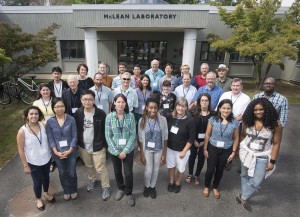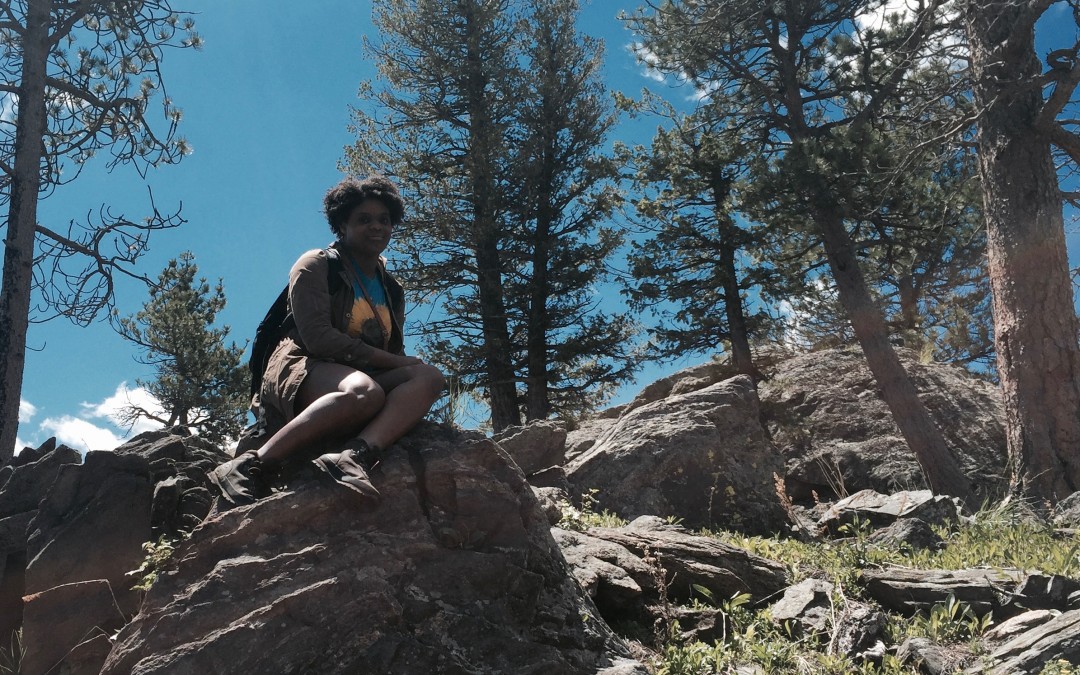by tierram | Jan 20, 2017 | Putting it Out There
Last December I attended the AGU Fall Meeting. I presented preliminary data on correlated EGA thermograms and 13C NMR spectra, see https://agu.confex.com/agu/fm16/meetingapp.cgi/Paper/134661.
This project is an active collaboration with Johnathan Sanderman at the Woodshole Research Center, and Jeffrey Baldock at Commonwealth Scientific and Industrial Research Organisation (SCaRP). National-scale inventories typically include soil organic carbon (SOC) content, but not chemical composition or biogeochemical stability. While 13C NMR is highly effective for SOM characterization, it is typically too expensive and time consuming for use in large-scale SOC monitoring. Therefore, we seek to understand if analytical thermal analysis is a viable alternative to NMR. This project has involved analyzing 300 agricultural samples collected by SCaRP, which have been divided into four fractions: whole soil, coarse particulates (POM), untreated mineral associated (HUM), and hydrofluoric acid (HF)-treated HUM. All samples have been analyzed by DSC-EGA, but only the POM and HF-HUM fractions were analyzed by NMR. The thermal and NMR data were analyzed by PCA and overlain with 2D Shige software to ascertain positive and negative correlations (as well as the intensity of these correlations). I made 5 key points in my presentation:
- Molecular composition is only part of the story.
- This due to the fact that C stability depends on soil chemistry
- Because thermal analysis a measure of biogeochemical stability, it may have great utility in assessing soil C dynamics
- DSC-EGA, NMR correlation provides dense information on SOC composition, stability, and lability
- We found strong positive and negative correlations between the CO2 thermograms and NMR spectra using 2D Shige.
The audience was intrigued by our findings so far. Moving forward, I will explore how mineral associations and mineralogy impact thermal data. This will entail running correlations against the DSC data.

by tierram | Oct 14, 2016 | In other news

Photo courtesy of NOSAMS
Ramped pyrolysis/oxidation (RPO), known colloquially as “dirt burning”, involves ramped heating of sediment or soil samples to generate gases suitable for capture and radiocarbon analysis. RPO radiocarbon analysis has been used to discern 14C age spectra and carbon dynamics in sediments with a variety of organic carbon sources. A recent NSF-funded workshop on Thermal Analysis of Natural Organic Matter held Sept. 15-16, 2016 at the National Ocean Sciences Accelerator Mass Spectrometry (NOSAMS) facility at the Woods Hole Oceanographic Institute (WHOI) brought a variety of researchers together to explore other potential applications of RPO. A combination of oceanographers, soil scientists, biogeochemists, and biologists convened to discuss the technique, which has emerged out of its infancy and into a nebulous adolescence. The core objectives of the workshop included: 1) Facilitating discussion between those using and interested in RPO, 2) Discussing how current RPO applications have increased understanding of Earth systems, 3) Targeting technical improvements and methodological experiments, and 4) Defining issues that would benefit from development and application of RPO. Discussion centered on geoscience and technical questions. For biogeochemistry, future endeavors for RPO can focus on discerning soil age distributions, bioreactor kinetics, and analysis of old ocean (and potentially freshwater) DOC. Technical questions involved refining RPO’s assessment of 14C content more directly with 14C age. Attendees also questioned how RPO can help assess the effect of chemical treatment on sample analysis. The technique is of particular interest to my dissertation research. The Plante lab frequently uses ramped combustion for the characterization of soil organic matter. I intend to couple those methods with 14C analyses on a set of African Dark Earth samples to examine the stability of organic matter in these soils.

by tierram | Jul 13, 2016 | In other news

Taking a break from sampling, and enjoying views of Borden Memorial Forest with SSI.
As a first year PhD student, the Summer Soil Institute (SSI) at Colorado State University was an excellent opportunity to learn from and network with top soil scientists. The SSI is one of the leading programs for soil science education in the country. It provides a venue to formally learn valuable soil analysis techniques that can be applied to participants’ research. The curriculum for the two-week course involved field sampling, sample processing, and a broad and informative series of lectures on soil pedology, chemistry, microbiology, and gas fluxes. I participated in this year’s program, and described my experience in a detailed two-part story on my blog. Part I (here) describes my first week’s experience in soil sample collection and chemical analyses, while Part II (here) covers the second week’s experience in soil biological analyses.



Recent Comments